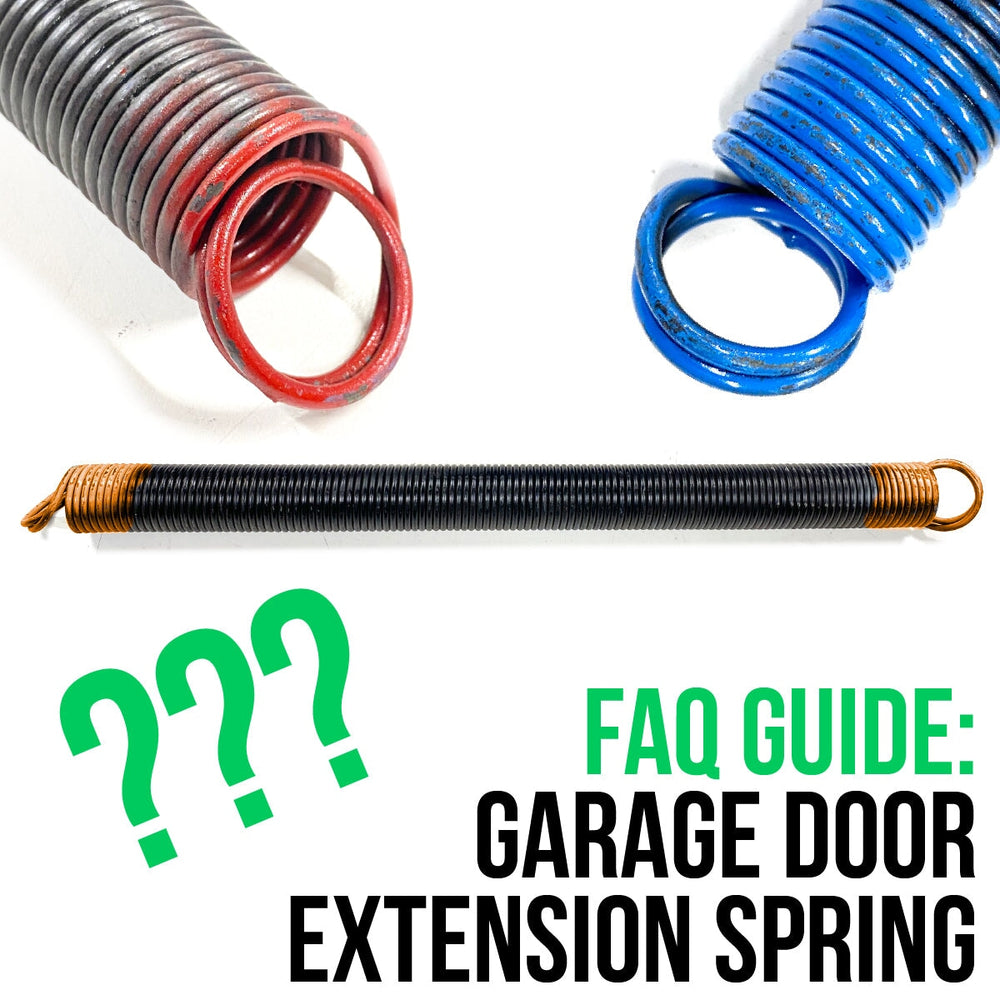Garage Door Extension Spring FAQ

Introduction
Garage door maintenance is essential for ensuring the smooth operation and longevity of your garage door system. Among the crucial components of a garage door are the extension springs, which play a vital role in lifting and lowering the door. In this FAQ, we will address the most common questions related to garage door extension springs, from installation and adjustment to replacement and balancing. By understanding the ins and outs of extension springs, you can maintain a safe and efficient garage door system.
FAQs
-
How do garage door extension springs work? Garage door extension springs are designed to store energy by extending when the garage door is closed and releasing it when the door is opened. The springs are mounted on either side of the door and are connected to the garage door cables. As the door closes, the springs stretch, storing the energy needed to lift the door when it is opened. The energy released by the springs helps counterbalance the weight of the door, making it easier to lift and lower.
-
How to install garage door extension springs? Installing garage door extension springs is a process that requires care and attention to safety. Begin by disconnecting the power to the garage door opener and securing the door in the open position with locking pliers or a C-clamp. Release the tension from the existing springs, if necessary, and remove them. Attach the new extension springs to the door's hardware, ensuring that they are the correct size and strength for your door. Check out our garage door extension spring selection here.
-
How to adjust garage door extension springs? Adjusting garage door extension springs involves modifying the tension in the springs to ensure the door opens and closes smoothly. Begin by disconnecting the power to the garage door opener and securing the door in the open position. Loosen the cable clamps that secure the springs to the door track brackets. Adjust the position of the springs by moving them closer or farther from the door to increase or decrease tension, respectively. Tighten the cable clamps once the desired tension is achieved, and test the door's operation to ensure proper balance and movement.
-
How to replace garage door extension springs? Replacing garage door extension springs requires following proper safety precautions, as the springs are under tension when the door is closed. Start by disconnecting the power to the garage door opener and securing the door in the open position. Release the tension from the existing springs and remove them. Attach the new extension springs to the door's hardware, ensuring they are the correct size and strength for your door. Adjust the tension on the springs as needed, and test the door's operation to ensure smooth movement.
-
How long do garage door extension springs last? The lifespan of garage door extension springs depends on their usage and quality. Generally, extension springs are rated for around 10,000 cycles, with a single cycle being one full opening and closing of the door. This translates to approximately 7-9 years of normal use. Regular maintenance, such as lubrication and inspection for wear, can help extend the life of your extension springs.
-
What size extension springs do I need for my garage door? The size of extension springs required for your garage door depends on factors such as the door's weight, height, and the lifting force needed. Consult the manufacturer's guidelines or consult with a professional garage door technician to determine the appropriate size and strength of extension springs for your specific door. Check out our extension spring buying guide here.
-
How to measure garage door extension springs? To measure garage door extension springs, you will need to measure three key dimensions: the length of the spring when fully extended (with the door closed), the diameter of the spring's coils, and the wire size. Begin by disconnecting the power to the garage door opener and securing the door in the closed position. Measure the length of the extended spring from one end to the other, and then measure the diameter of the coil by measuring the distance across the widest part of the spring. Lastly, measure the wire size by using a micrometer or wire gauge tool. These measurements will help you determine the appropriate replacement extension springs for your garage door.
-
How to balance a garage door with extension springs? Balancing a garage door with extension springs ensures the door operates smoothly and evenly. Start by disconnecting the power to the garage door opener and securing the door in the open position. Check the tension of the springs to ensure they are evenly adjusted on both sides of the door. If necessary, adjust the springs' tension by moving the spring's attachment point on the door track bracket. Test the door's operation by opening and closing it manually, making any further adjustments as needed until the door is properly balanced.
-
How to determine garage door extension spring size? Determining the correct garage door extension spring size is crucial for proper door operation. Refer to the manufacturer's guidelines or consult with a professional garage door technician to determine the appropriate size and strength of extension springs based on your door's weight, height, and lifting force requirements. Check out our garage door extension spring size chart here.
-
When to replace garage door extension springs? Garage door extension springs should be replaced when they show signs of wear, such as rust or elongation, or if the door is no longer operating smoothly. Additionally, if one spring breaks, it is recommended to replace both springs at the same time, as the other spring is likely to fail soon due to similar wear and usage. Regular inspection and maintenance can help you identify when it's time to replace your garage door extension springs.

